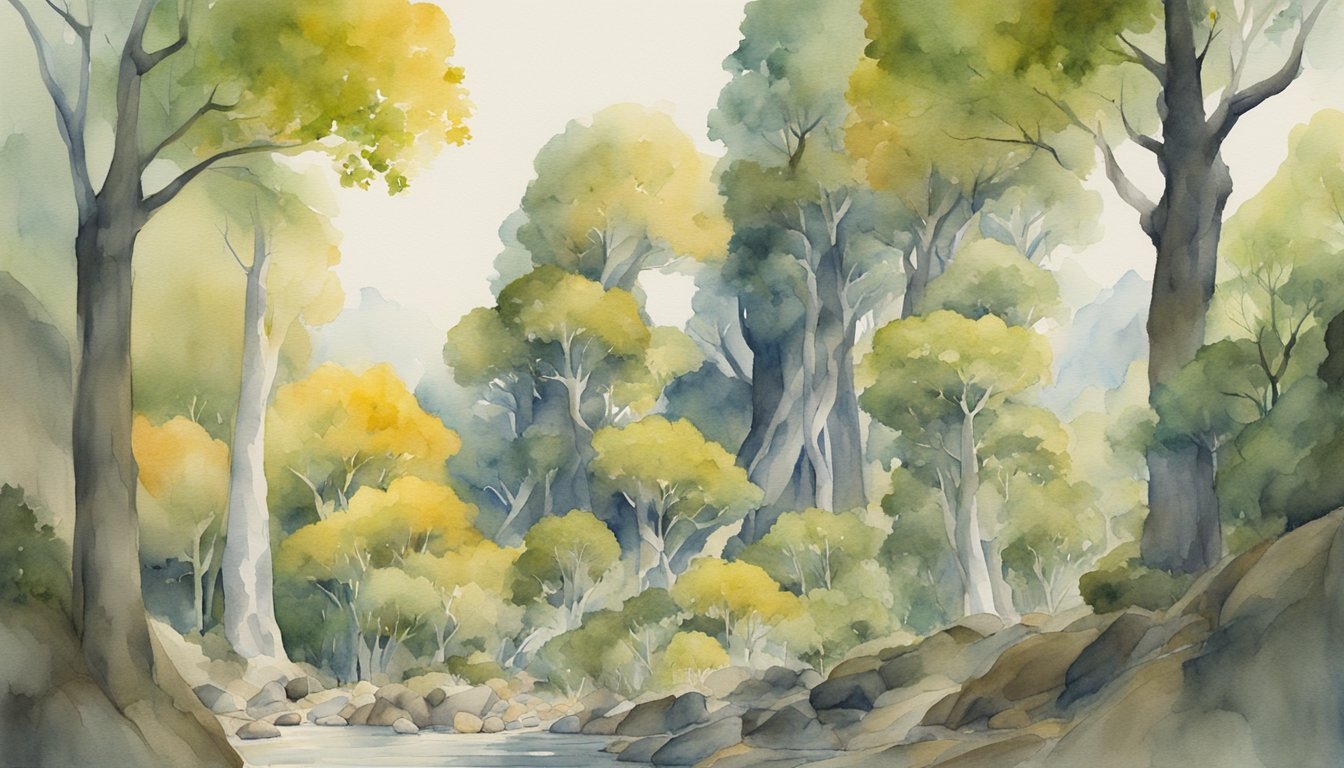Understanding Pando
Pando, also known as the Trembling Giant, is an exceptional wonder of the natural world, recognized not only for its immense size but for its unique biological and ecological characteristics that contribute to our understanding of ecosystems.
Scientific Classification and Genetics
Pando, or the “Trembling Giant,” is classified as Populus tremuloides, commonly known as the quaking aspen. Botanists and ecologists have determined that Pando is a clonal colony, which means it is made up of genetically identical stems that have grown from a single root system. Research led by Dr. Karen Mock from Utah State University and others has established that this shared genetic makeup is what qualifies Pando as a single living organism.
Physical Characteristics
The aspen clone spans approximately 107 acres and weighs an estimated 6,615 tons, making it one of the world’s largest known organisms by mass. Each individual tree, or stem, is a part of the larger living organism, sharing a massive underlying root system that is crucial to Pando’s growth and survival.
Location and Habitat
Situated in central Utah’s Fishlake National Forest, near Fish Lake, Pando thrives in an ecosystem characterized by a mix of high elevation, regular precipitation, and soil types that support its expansive root system. It is central to the natural processes and biodiversity of this region.
Environmental Significance
Pando represents one of the most remarkable demonstrations of a clonal colony’s resilience and longevity. This organism provides a critical habitat and serves as an indicator of ecological health within its environment, making it a focal point for environmentalists and the scientific community, including groups such as the Western Aspen Alliance.
Pando’s Role in the Ecosystem
Aspens, including those found in Pando, are keystone species in their ecosystems. An array of wildlife, such as deer, elk, and mule deer, depend on the foliage for shelter and nutrition. The interconnected root system of Pando supports a complex network of life, demonstrating the significance of aspens to the overall health of forests.
Threats and Conservation
Threats to Pando’s survival include overgrazing by deer and cattle, climate change, disease, and pests. Conservation efforts by organizations like Friends of Pando and researchers such as Paul Rogers are essential in protecting this unique organism. Jeff Rice and Lance Oditt are among those contributing to efforts to understand Pando’s acoustic environment and raise awareness for its preservation.
Pando in Culture and Research

Pando, often referred to as the “Trembling Giant,” captures both scientific and public interest for being one of the world’s oldest and largest living organisms. Here we explore how Pando crosses the realms of research, public engagement, and the arts.
Scientific Studies and Discoveries
Scientists, fascinated by Pando, the world’s largest tree by weight, have conducted numerous studies to understand its remarkable characteristics. Research spearheaded by ecologists like Paul Rogers of Utah State University and Karen Mock of the University of Colorado illuminates Pando’s unique suckering and regeneration processes. Their findings have added to our understanding of aspen clonal colonies, highlighting concerns about Pando’s future amidst environmental threats. The continued study of this trembling giant yields important data on plant communication and defense mechanisms within these ancient, interconnected networks.
Public Engagement and Education
The environmental community around Pando strives to increase public awareness through outreach initiatives. Friends of Pando, a nonprofit organization, champions efforts to engage with the public on the importance and majesty of this organism. Educational programs aided by research from institutions like Utah State University underscore the enclave’s ecological significance and foster community involvement in preserving this majestic organism. These educational efforts extend to parks like Yellowstone, where the concept of large, interconnected living systems can also be found. Such initiatives help draw parallels between Pando and other vast ecosystems, emphasizing the delicate balance required for their survival. Scientists and conservationists highlight how factors like climate change and human interference impact these interconnected systems, much like how Yellowstone recent seismic activity serves as a reminder of the park’s ever-evolving geological and ecological landscape. By fostering a deeper understanding of these environments, advocates hope to inspire stronger conservation efforts for Pando and similar ecosystems worldwide.
Artistic Interpretations
Artists have long found inspiration in Pando’s sprawling grandeur and historical resonance. The Pando Photographic Survey, for instance, aims to create one of the largest images ever recorded using 360-degree cameras. Jeff Rice’s work in recording the sounds of Pando with a hydrophone provides a novel sensory experience of this living phenomenon. Lance Oditt’s audio work combines science with art, taking a creative approach to echo Pando’s story to a broader audience, engaging them not just intellectually, but emotionally. Other artists explore Pando through different mediums, from intricate paintings capturing its seasonal transformations to poetic compositions reflecting its deep-rooted legacy. Recent projects, such as a grassy knoll photos analysis, examine how light and shadow interact with the forest’s dense canopy, offering new perspectives on its sprawling interconnectedness. These varied artistic endeavors ensure that Pando’s legacy endures, inspiring future generations to appreciate and protect this natural wonder.

